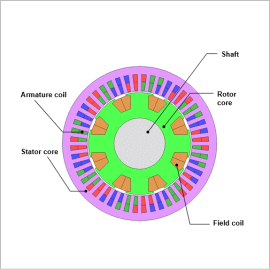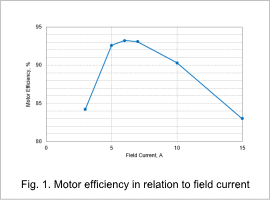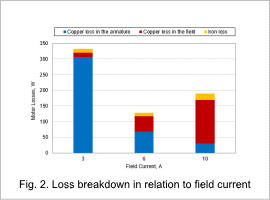Overview

In designing high-efficiency motors, it is important to understand the combination of field current and armature current that can achieve maximum efficiency. However, understanding these by using actual measurements requires great effort. On the contrary, by using simulations, these can be understood with ease in a short amount of time.
In this example, we determine the motor efficiency in relation to the field current for a WFSM when the motor output is kept constant.
Relationship Between Field Current, Motor Efficiency, and Loss Breakdown
The motor efficiency in relation to the field current when the rotation speed is 600 r/min and the torque is 28 Nm is shown in Fig. 1, and the loss breakdown for when the field current is 3, 6, and 10 A are shown in Fig. 2.
From Fig. 1, motor efficiency is reaching maximum when the field current is 6 A. From Fig. 2, it can be seen that the copper loss is taking a large proportion in the motor loss. When reducing the field current to less than 6 A, copper loss of the armature increases and efficiency goes down since it is necessary to increase the current amplitude of the armature in order to maintain the same output. On the other hand, when increasing the field current to over 6 A, the efficiency goes down likewise since the copper loss of the field increases.
From these results, it can be concluded that determining the optimal combination of the armature and field currents is important in order to achieve maximum efficiency in the WFSM. Moreover, by using simulations, it is possible to comprehend the details of the loss which is a determinant of motor efficiency.




